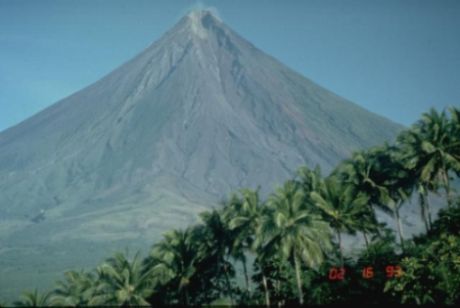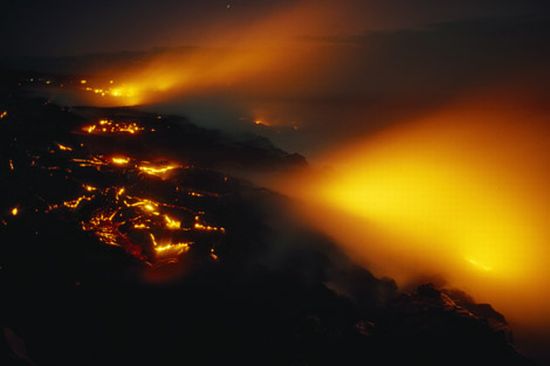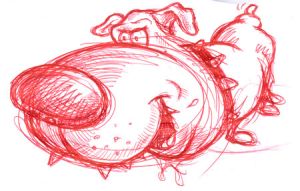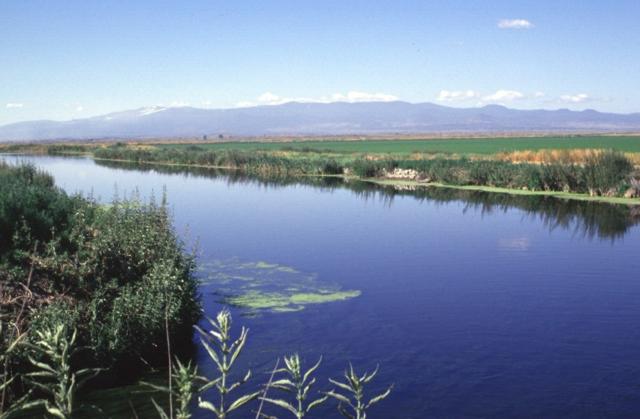Research and discussion topics

Introduction
The news story suggests lots of interesting topics for discussion and research.
Take a look at those we've picked out from the text. Compare ours with those you found using the methods in Getting the topics.
In groups discuss the differences. This isn't about right or wrong. Your choice is as good as ours as long as you can explain and defend it.
Now have a go at some of the topics - ours or yours.
Selected topics
Like an angry dog, a volcano growls before it bites.
Each volcano has its own personality.
Brodsky is trying to find the rules behind these different personalities.
Observatories will likely have to tweak their predictions based on the unique characteristics of each system.
Want more?

Like an angry dog, a volcano growls before it bites.
Let's take a look at volcanoes, what they are and what they do.
According to National Geographic, volcanoes are "vents on the Earth's surface where molten rock, debris, and gases from the planet's interior are emitted."
But why? The Earth is pretty much full of molten rock. And most of the time we don't know anything about it, since it stays where it should - well underground.
So what makes magma come to the surface sometimes, with often catastrophic effects? We're not going to tell you. You are going to tell us - well your colleagues and teacher anyway.

Working in groups, use the links in this section, and any others you can find, to learn what you can about volcanoes. Then prepare a short presentation to your colleagues and teacher.
The form of the presentation and what it contains is pretty much up to you. But we want to know at least why volcanoes happen, roughly how many there are in the world and where they occur most often.
We'd also like to know a little about a specific volcano that interests you. There's a fair amount of choice, since the Smithsonian's Volcanoes of the World website lists over 1500 by name.
Other websites you might like to look at include BBC, PBS and National Geographic

Each volcano has its own personality.
You're now going to take a look at the different types of volcano.
We recently received an email from a young pupil at a US school asking how many different types of volcano there are. It's a simple question but it doesn't have a simple answer.
So your first task is to research this question, and come up with the best answer your group can find.
Put together a paragraph that tells your colleagues how many different types of volcano scientists now recognise. You should also say a little about why this number has changed over time.
You might like to take a look at some or all of these websites.
Thinkquest types
But do your own searching too.
 triassic.gif
triassic.gif
Brodsky is trying to find the rules behind these different personalities.
She has clearly succeeded to some extent.
So for this topic we'd like you to go through the news story in detail and pick out all the places that talk about the patterns this new study has found.
See how many rules of this form you can make from them:
"If a volcano ... then it will ...."
where the spaces can have as many words as you like in them.
Now in your groups put together one paragraph that explains in your own words how - and how well - scientists can predict when a volcano will erupt. You might like to use the following sites to find out more about predicting volcano eruptions.

Observatories will likely have to tweak their predictions based on the unique characteristics of each system.
"Observatory" is a word normally used for a place where scientists do astronomy - observing stars, planets and galaxies. But as the pop-up meaning shows, it's a word that's also used nowadays for places where several other types of science are done.
Carry out some online searches on "volcano observatory". See how many of these you can find around the world. In your groups choose one volcano observatoty and find out what you'd have to do to get a job, and what it's like to work there.
There are several ways of tackling this assignment and we're not going to tell you which to choose. You decide. At least one of the volcano observatory websites, for instance, has a page of information for future volcanologists. So you could get information there.
You could also try getting in touch by email - or any other way you can think of - with some volcanologists, including maybe those you met in the news story itself.
[More words: astronomy, average, billions, gravitation, climatology, galaxies, geology, meteorology, mass, oceanography, universe, volcanology]
